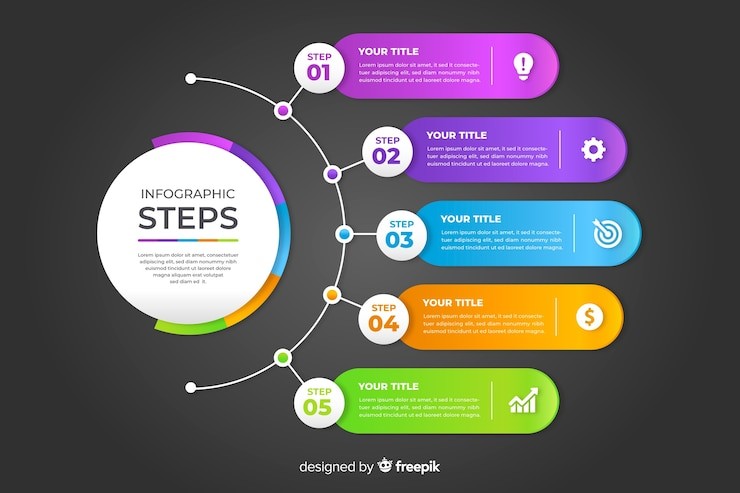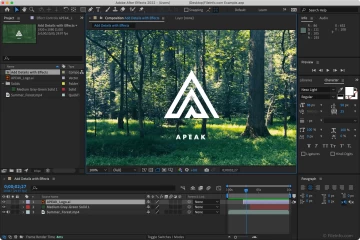Infographic Resources for Creatives

Information graphics have been used in written communication ever since the first "writing" tools were developed. The combination of visual and textual symbols has been discovered in prehistoric artworks such as cave paintings, rock carvings, and sculptures (a type of pre-writing).
These works of art date back some 32,000 years; they depict scenes from stories, document historical events, and even present religious concepts. Infographics were the perfect medium for relaying an unlimited variety of information even among ancient people.
Infographics, in today's parlance, are any charts or visual representations designed to convey a great deal of data to the reader quickly. Graphical representations are used to convey concepts that would be too complex or time-consuming to explain using only words and images.
Types of infographics can range from the extremely simple (such as bar graphs) to the extremely complex (such as a network of interconnected nodes in a database) and everywhere in between. Infographics are commonly used in instruction manuals and children's books to explain complex processes in an easy-to-follow format. The scientific and mathematical communities tend to use more elaborate layouts to present their findings.
Infographics are still used today to inform, educate, and entertain audiences. Even if we've come a long way from the charcoal stick, infographic fundamentals are still the same. These days, vector art is the norm for infographics. To a large extent, many individual designers and design studios will focus solely on infographic design.
The collection of excellent infographics presented here was compiled from various online sources. We gathered these because of their ingenuity, comedy, cleverness, practicality, or sheer insanity.
These motivational video infographics may also pique your interest.
Data Needed, America Is Hungry
Information graphics have been used in written communication ever since the first "writing" tools were developed. The combination of visual and textual symbols has been discovered in prehistoric artworks such as cave paintings, rock carvings, and sculptures (a type of pre-writing).
These works of art date back some 32,000 years; they depict scenes from stories, document historical events, and even present religious concepts. Infographics were the perfect medium for relaying an unlimited variety of information even among ancient people.
Infographics, in today's parlance, are any charts or visual representations designed to convey a great deal of data to the reader quickly. Graphical representations are used to convey concepts that would be too complex or time-consuming to explain using only words and images.
Types of infographics can range from the extremely simple (such as bar graphs) to the extremely complex (such as a network of interconnected nodes in a database) and everywhere in between. Infographics are commonly used in instruction manuals and children's books to explain complex processes in an easy-to-follow format. The scientific and mathematical communities tend to use more elaborate layouts to present their findings.
Infographics are still used today to inform, educate, and entertain audiences. Even if we've come a long way from the charcoal stick, infographic fundamentals are still the same. These days, vector art is the norm for infographics. To a large extent, many individual designers and design studios will focus solely on infographic design.
The collection of excellent infographics presented here was compiled from various online sources. We gathered these because of their ingenuity, comedy, cleverness, practicality, or sheer insanity.
Data Needed, America Is Hungry
This infographic's use of contrasting hues is both visually appealing and reminiscent of a retro style. Based on the size of his brain and the number of pixels in his eyes, it seems that the obviously nerdy protagonist has ingested 3.6 zettabytes of information. It was enlightening, entertaining, and most importantly, unforgettable.
Report on Social Media Networks in 2010
This layout classifies online social networks according to the most popular websites for each prevalent mode of online interaction (e.g. pictures, blog platforms, and so forth). The design is okay, but the sheer amount of data shown makes up for it. Please don't feel bad if you've never heard of any of these websites. There is a "German edition" of the infographic.
Will the world really end in 2012?
This poster-style infographic shows the disagreement between those who don't believe that the world will end in 2012 and those who are fervent in their conviction that it will. The neutral color scheme of this design highlights the debate's tongue-in-cheek, almost news-like appearance.
Different Cultures, Different Colors
While the visual appeal of this design is undeniable, the infographic's use as a teaching tool is less so (what gives with the "repels evil?" labeling, anyway? (Why did nobody tell me that before?)
Web Designers: Everything You Need to Know
The inclusion of amusing icons elevates this otherwise straightforward bar chart. It would appear that designers' maturity levels can be summarized by the gender icon they choose.
Photoshop's Darwinian Development
Infographics come in a wide variety of forms; one common one is the timeline. Time and history are two very broad and theoretical subjects. If you subscribe to the theory of linear time, the graphical element will help you picture the passage of time.
Displaying Visualization Techniques in a Time-Based Periodic Table
Problems with many visual forms of expression, briefly discussed. In the shape of a periodic table. Fully loaded with interactive examples. In other words, this needs no further explanation.
An Overwhelming Maze of Privacy Settings on Facebook
In May 2010, Facebook introduced new privacy settings. In particular, I like the bar chart that compares the length of the US Constitution to Facebook's Privacy Statement (5,830 words) (4,543 words).
The Metro Guide to Rock & Roll
The Rock
An attempt to "map out" the various musical influences that have shaped rock & roll bands. Clever display as a subway map look-alike.
Calculating the Quality of Trilogies Using a Meter
An Evaluation of Trilogies Using a Special Scale
a bar graph representation of how I rate the films in popular trilogies. Uncomplicated and practical
An Assortment of Infographics Regarding Social Media
Dream Infographic Exhibition
An amazing illustration on observing and documenting dream theory. This design remains legible, cutting-edge, and stylish despite its sparse use of graphics and heavy emphasis on white space. Data Needed, America Is Hungry
This infographic's use of contrasting hues is both visually appealing and reminiscent of a retro style. Based on the size of his brain and the number of pixels in his eyes, it seems that the obviously nerdy protagonist has ingested 3.6 zettabytes of information. It was enlightening, entertaining, and most importantly, unforgettable.
This year's iteration of the Prism Social Media 2010 design categorizes the most popular social networking, blogging, and IM sites (e.g. pictures, blog platforms, and so forth). The design is okay, but the sheer amount of data shown makes up for it. Please don't feel bad if you've never heard of any of these websites. There is a "German edition" of the infographic.
Will the world really end in 2012?
Will the world really end in 2012?
This poster-style infographic shows the disagreement between those who don't believe that the world will end in 2012 and those who are fervent in their conviction that it will. The neutral color scheme of this design highlights the debate's tongue-in-cheek, almost news-like appearance.
Different Cultures, Different Colors
Different Cultures, Different Colors
While the visual appeal of this design is undeniable, the infographic's use as a teaching tool is less so (what gives with the "repels evil?" labeling, anyway? (Why did nobody tell me that before?)
Web Designers: Everything You Need to Know
Web Designers: Everything You Need to Know
The inclusion of amusing icons elevates this otherwise straightforward bar chart. It would appear that designers' maturity levels can be summarized by the gender icon they choose.
Photoshop's Darwinian Development
Photoshop's Darwinian Development
Infographics come in a wide variety of forms; one common one is the timeline. Time and history are two very broad and theoretical subjects. If you subscribe to the theory of linear time, the graphical element will help you picture the passage of time.


.png)

